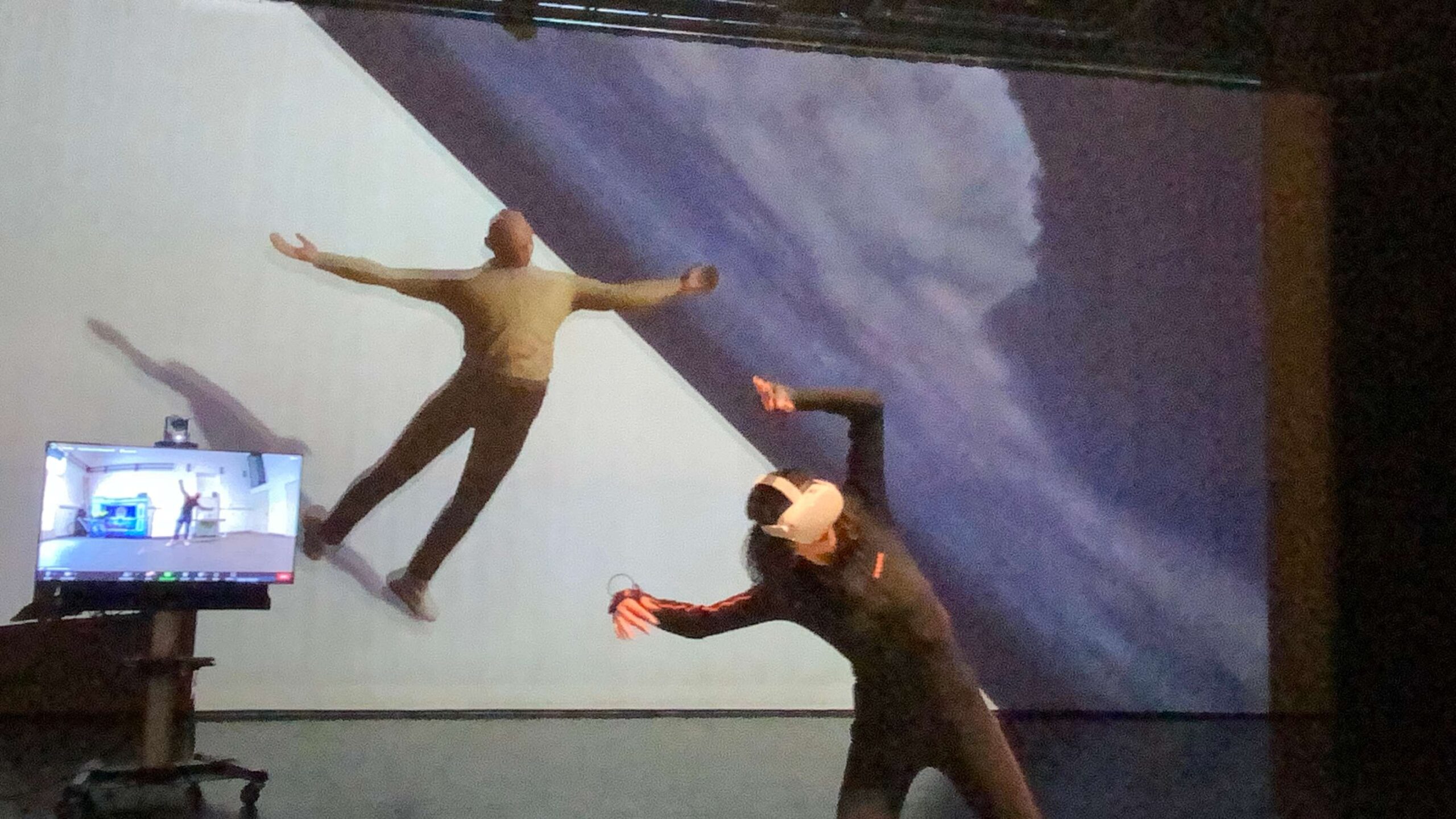Actor/Dancer virtual co-creation environment
CYENS – AHK ID-Lab – ICK Experiment
On 21. and 22. March 2023 three partners of the Premiere consortium (Cyens Centre of Excellence, AHK ID-Lab and ICK (International Choreographic Arts Center) met for a two-day workshop at AHK ID-Lab Amsterdam. Together they experimented with dance knowledge transmission in a virtual space. This workshop was the first joint activity dedicated to developing and testing software for an actor/dancer virtual co-creation environment. Suzan Tunca (ICK) gave a Double Skin/Double Mind (DS/DM) dance class in Amsterdam to dancer Eva Athanasiou who participated from Nicosia, Cyprus. DS/DM is a dance method developed by artistic directors of ICK Dans Amsterdam Emio Greco and Pieter C. Scholten. Both dancers wore motion capture suits and VR glasses and met each other as avatars in a virtual landscape. Besides providing new insights on what is needed to technologically optimize human body-representation, interaction and synchronization of participants in the virtual space, the experiment also triggered some reflections on the problems and potentials of dance knowledge transmission/exchange in virtual space:
One of the main problems of working with virtual avatars for dance knowledge transmission is that they so far only capture the form of a movement and not the inner life of the human body. There is no sense of a physical presence of the other dancer, only a visual idea of another body. The articulations of the movements of the avatar are not yet nuanced enough to capture the details needed for the complex and subtle full body communication abilities that are necessary for dance knowledge transmission.
Potentials that still need to be explored are the ability to expand and train the perception of a dancer to split awareness between virtual and physical spaces and to learn to communicate dance through this expanded awareness. This quality of perception would need to be trained to be able to realize an experience of collaborating in a virtual space that would not diminish but enhance an experience of collaborating in the same physical space. Benefits and deficits of this virtual rehearsal and co-creation environment for human-to-human corporeal communication need to be questioned critically in parallel with further technological developments. Other potentials to explore are how the relation between the dancing body and the doubled space of virtual and physical space transforms the distribution between inner and outer awareness, how this impacts the readability of movement qualities and the relations between the collaborating dancers.
With Double Skin/Double Mind (DS/DM), a double awareness is trained that is bi-directionally aware towards the inside as well as towards the outside of the human body.
In the context of this experiment, the inside awareness was strengthened and amplified due to the lack of orientation and distorted visual reference in the virtual space. One is forced to anchor even more deeply into the corporeal experience. At the same time the outside oriented awareness was transported into an other than physical – virtual space, creating a somewhat alienating distance to the physical body, causing a slight change in the proprioceptive experience of gravity.
For ICK (International Choreographic Art Center) the Intuitive Body is the protagonist and visionary that inspires choreographic creation and situates it in relation to society at large. In service to dance art and in the context of the Premiere project ICK defends the Body in Revolt and claims that the digital experience necessarily needs to enhance the physical experience rather than diminish it. Experimenting with dance knowledge transmission in a multiplied space (physical and virtual) realized through newest technological developments poses serious but exciting challenges. ICK is curious to confront these challenges together with the Premiere team during upcoming re-staging of the same experiment to enable dance co-creation/rehearsal in a virtual space.
© Photograph by Erik Lint

